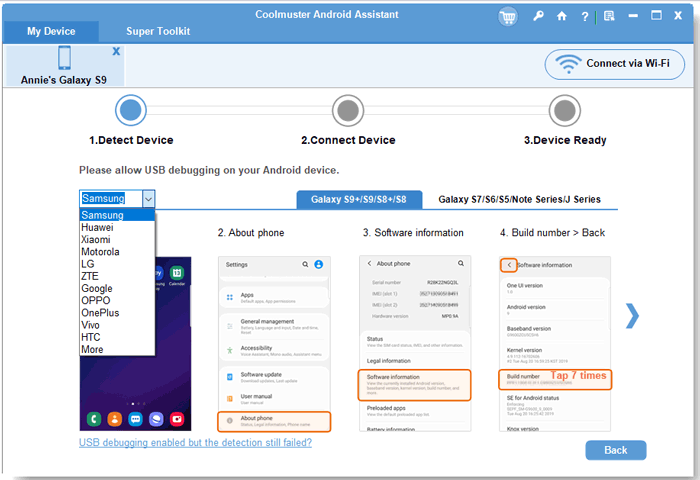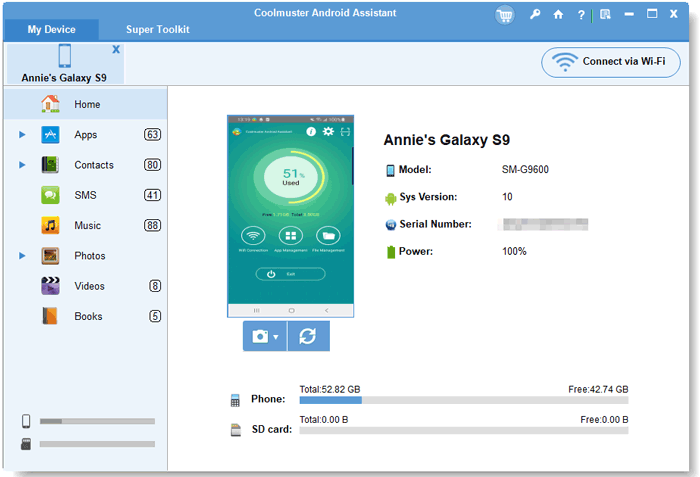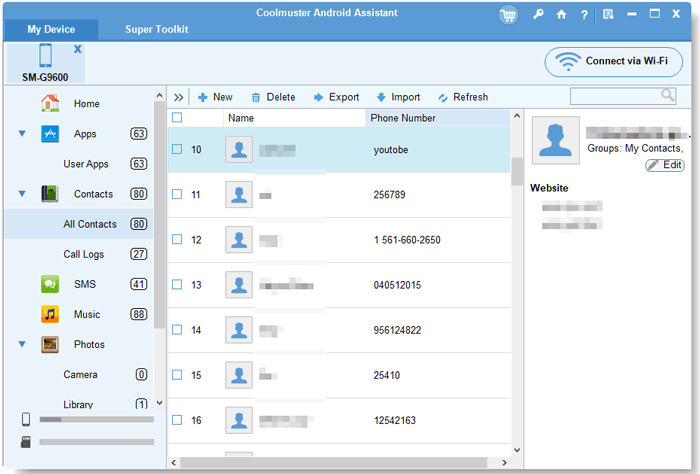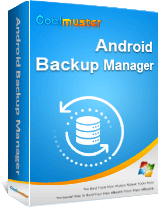"I have downloaded a TV app with my Android phone network that is an APK file. When I connected my Android phone to the television and only found that the television couldn't recognize the phone at all. I realize that the only way to play the APK file on television is to transfer it from my Android phone to an SD card and then I can insert the SD card to my television to copy the APK file from SD card to the TV set. But, is it possible to copy Android data to an SD card?" -- Ben
Whatever your reasons to copy Android phone data to an external SD card, for the above transmission medium intention, or you just want to copy your Android files on SD card for backup because we really can't afford to lose them from an Android phone or tablet due to various unexpected reasons. Seeing as these days, we can do almost everything on our mobile phones, such as listen to music, watch movies, send & reply text messages, save hundreds of contacts, play different apps, surf the Internet and so on. Beyond doubt that you will save most of the important data on your Android that you can't imagine what you will do if you lost them some day.
Well, there is always a solution! We can take advanced action to keep a backup of the Android data so that we will never need to worry about data loss issue on our Android devices. Here is the Coolmuster Android Assistant or Coolmuster Android Assistant for Mac, which is a great application that can help you backup all your Android phone contacts, text messages, photos, videos, music, apps, documents and many more to Windows or Mac computer, or any other storage devices, such as an SD card. After the transfer, you can have a safe keep or later restore for your Android data.
Do you want to follow us to see how to backup Android data to an SD card with Coolmuster Android Assistant?
Step One: Download and install Android file transfer
The first step is to simply download and install the Coolmuster Android Assistant on your computer. Once the installation has finished, you can run it and see its easy to navigate interface. At this point, connect your Android device to the same computer via a USB cable.

Follow the below instruction to enable USB debugging on your Android phone. If you did it before, you can skip to next step.
1) For Android 2.3 or earlier: Enter "Settings" < Click "Applications" < Click "Development" < Check "USB debugging".
2) For Android 3.0 to 4.1: Enter "Settings" < Click "Developer options" < Check "USB debugging".
3) For Android 4.2 or newer: Enter "Settings" < Click "About Phone" < Tap "Build number" for several times until getting a note "You are under developer mode" < Back to "Settings" < Click "Developer options" < Check "USB debugging".
After you finish the USB debugging, you can go to your device screen to tap the "Allow" option. Then, the parameter information of your device, including phone model, system version and storage space size will be shown in the main interface.

Step Two: Browse and preview your Android data
This Android File Transfer tool scan your connected Android phone for all files in it. All the scanned out Android data will be shown in categories on the top, including Photos, Videos, Music, Contacts, SMS, Apps, etc. Just open each category, preview contained files and tick off the data you want to backup on your SD card.

Step Three: Insert SD card and backup Android data on it
Now you can connect your SD card to the same computer. Click the "Export" button, choose the SD card as destination location and then all the selected Android files will be transferred to the SD card automatically.
Related Articles:





